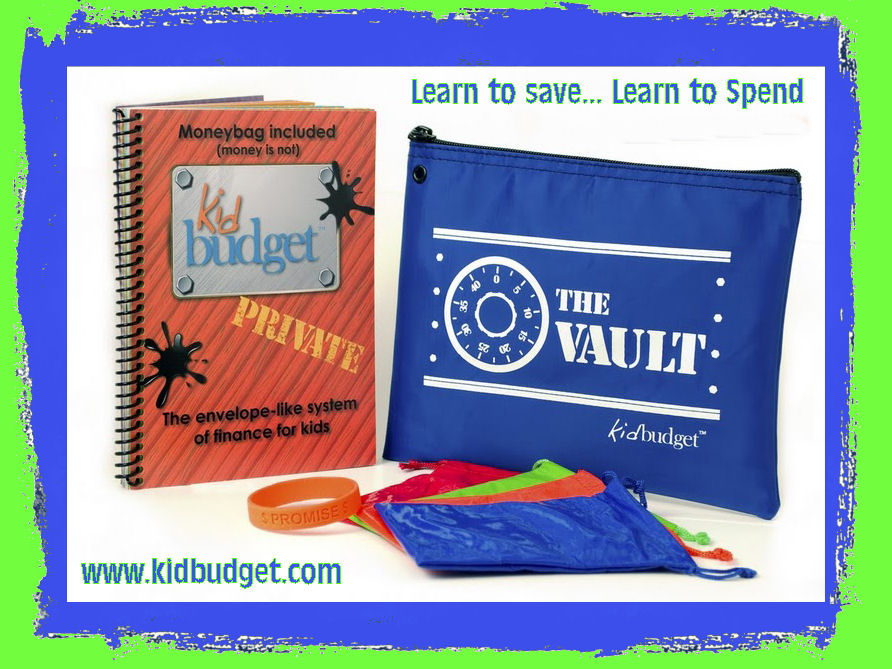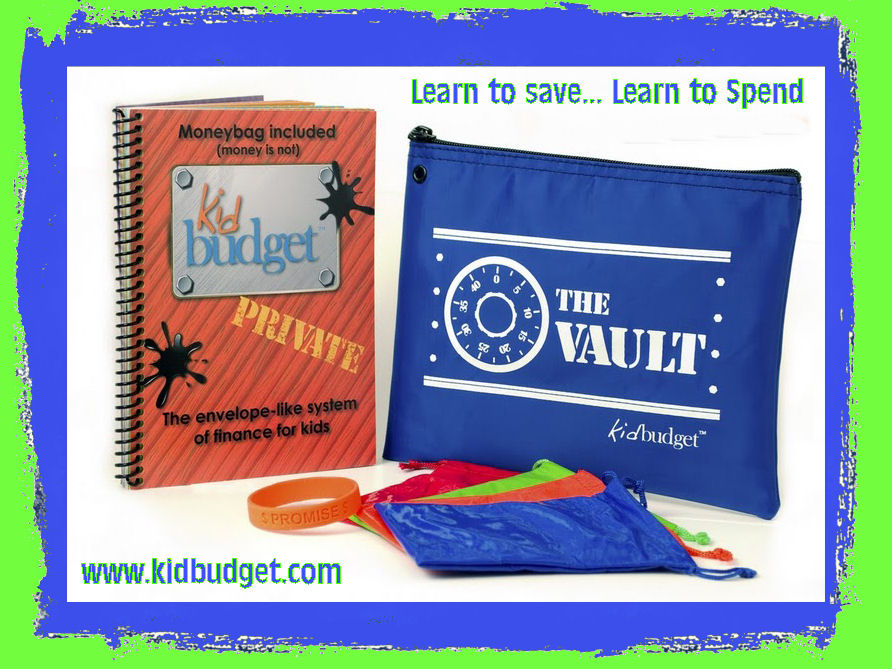When I was first introduced to the KidBudget program, I liked the way the system was completely geared towards kids. The colors were bright and fun. The drawstring bags that were placed in a zippered pouch were a fun twist on the traditional envelope system. A workbook meant for kids to go through on their own (with a little parental help here and there) allowed for kids to truly take charge of their own finances. For good measure, the makers of KidBudget threw in one of the silicone saying bracelets that seem to be popular these days. The program appeared like it could work for Munchkin as she’s detail/planning oriented on many things. When I agreed to review the program, I didn’t realize how many things would be fighting against us as we actually tried to use it….
KidBudget arrived quickly, and the first impressions were quite good. Munchkin liked that this was her program. The only problem? Currently, she had no money as she was working off the debt from the guinea pigs that she had purchased. (Normally, we would make her save, but we chose to make an exception in this case due to the circumstances surrounding the purchase.) Because of that, she was not motivated to start the program. She knew that taking out a loan was not what the program would recommend. She wanted to wait until she was no longer in debt to begin. I can’t say that I blame her, but I did ask her to at least check things out while she was on the road to becoming debt-free once again.
Munchkin liked that the workbook is small and spiral bound. With a little effort, it can be placed in the vault with the money bags. (She likes it when everything can be contained together as it’s less likely parts will be misplaced.) The program is not dry and boring. Instead, it keeps things fun and even includes some jokes and riddles along the way. (Yes, she was reading us the jokes and riddles as she read them.) The program is meant to be done at the child’s pace. They can spend as much or as little time as they want on it per day/week. (If you have a child that isn’t self-motivated, you may want to set up a schedule for them or set a deadline to complete the workbook.)
The workbook starts out by briefly explaining the program. The child then records their name, age, and net worth in their workbook. (This is the reason that it was hard for her to want to start the workbook right away.) The first information covered in the workbook is the system tools and how they are used in the program. The only thing not included in the program that the child will need is a calculator (although, in my opinion, this isn’t a necessity) and money. Sorry, the money is not included. **grin** The program is geared towards helping kids learn about finances in a fun, stress-free manner.
The next section of the workbook goes into learning about money, how much things cost, and learning more about spending habits. It concludes with a set of rules to get the child started on the road to financial freedom. Yes, I did go there. The truth is that if children learn about the wise use of money at a younger age, they will be less likely to end up in debt later on in life. We have a society that is built on the buy-it-now mentality, and it’s not a good thing. Learning how to wisely spend money and save will help relieve a great deal of stress. In my opinion, it’s much easier to learn these good habits earlier in life than to try to break old spending habits and start building good saving habits as adults.
Now, we start to move into the heart of the program – The Vault and pouches.
- The first topic covered is long-term savings and the idea of paying yourself first. With a little guidance from the program, the kids will set up saving goals. They will also learn how long it might take to reach those goals.
- Next is short-term savings. First, kids will learn to differentiate needs from wants. (I know that sometimes we need to take a good hard look at whether something is genuinely a need or a want. Sometimes even needs can turn into wants when we try to “upgrade” to a bigger, better item.) They will then be taught how to set up priorities. Finally, they set up concrete goals for their short-term savings.
- Making a difference through giving. Learning about giving involves understanding that there are those who genuinely need your money more than you do. This isn’t always an easy concept. In the program, kids will learn about different places in need, set up giving goals, and determine the percentage of their income they will be dedicating to giving.
- Time for some fun money aka mad money. Setting up all of the long-term and short-term saving goals and planning on how much money to give away is absolutely wonderful, but kids also need to be able to have at least a little fun with their hard-earned money. That’s where the fun money comes into play. Just like with the other parts of the financial plan (budget), kids will set up a goal for their fun money. Due to the draw of this portion of the program, a little parental guidance is helpful especially until they get the hang of doing this on their own.
Now that they understand the program and they’ve set up their goals, it’s time to put everything into practice. Kids will begin tracking their money (tracking sheets as well as other charts are in the workbook, and free printable tracker sheets are available on the website), learning about earning a paycheck, and focusing on spending wisely.
I am quite impressed with the set-up of the program. It grabs Munchkin’s attention, and she’s started implementing the techniques learned in the workbook. She is happily in the green once again, so she’s setting up all of her goals. She’s even taken things a step further based on some of the information she read. She’s created her own job chart that includes her going rates for different projects around the house. Obviously, we, as the parents, have the final say on this, but we appreciate the fact that she has taken charge of her own budget.
All of the parts included appear to be well made. The workbook feels durable – like it will hold up to lots of use and abuse. While we don’t personally care for the shiny material of the drawstring bags, they are fun as they can be decorated and labeled to suit the child’s taste. The zippered vault pouch is made with heavy duty material and stitched well. It even repels liquids. (Don’t ask how I know….)
Overall, I have no problem recommending this kid-friendly budget program, but even more important, Munchkin likes and recommends the program for kids. The KidBudget website has free printables (including a sample lesson) as well as great money facts resources. The complete KidBudget Program is available through their website for $24.99. The various parts of the program (workbook, vault, pouches) can also be purchased individually.
I received the KidBudget program to help facilitate the writing of a frank and honest review. A positive review is not guaranteed, and all opinions are my own.


